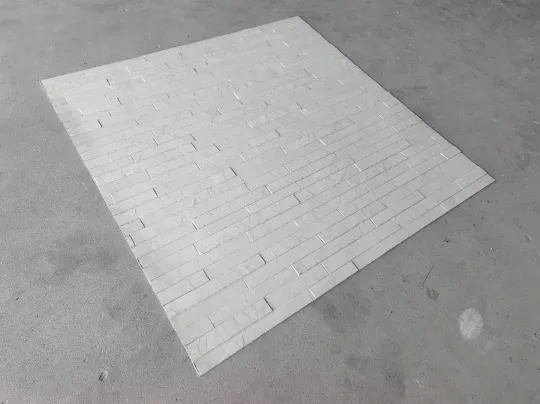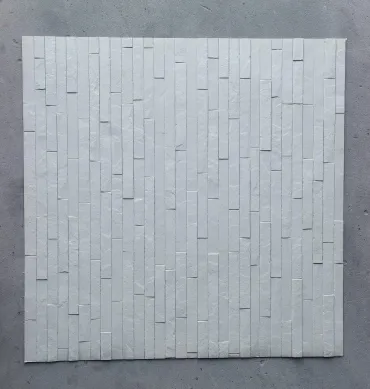
How Masonry Stone Color Affects Price: A Complete Guide to Cost Differences

Have you ever browsed through stone selections only to get dizzy from the price variations? Maybe you fell in love with a rich charcoal granite only to get sticker shock when you saw the price tag. Or perhaps you wondered why two similar-looking stones have completely different costs. Well, here's the secret: the color is doing much more than just catching your eye—it's driving that price point .
After years in the stone industry and countless client consultations, I've seen how color fundamentally impacts budgets, projects, and design dreams. Whether you're renovating your kitchen, designing a commercial space, or selecting stone for outdoor landscaping, understanding the "color-cost connection" will save you both money and headaches. This isn't just about aesthetics—it's about geology, rarity, and global markets converging in that stunning slab you're admiring.
Why Color Matters More Than You Think
Most folks assume stone pricing is just about quality or thickness, but color plays the lead role in this financial drama. When manufacturers source granite slabs , they're dealing with geological lottery tickets. Some hues emerge from common mineral combinations found worldwide, while others require rare mineral cocktails that only appear in specific mountain ranges. The harder these shades are to find in nature, the more expensive they become.
Black Stones: The Timeless Investment
Rich blacks like Absolute Black or Nero Impala have that luxury appeal but come with luxury pricing. Deep black stones are geological oddities formed under incredibly specific pressure conditions. Most quarries can only extract them from deep underground sites with sophisticated equipment—driving extraction costs up 30-40% compared to lighter stones. Since high-end hotels and corporate lobbies constantly seek this shade, demand perpetually exceeds supply.
White Stones: Delicate & Pricey
You might think whites like Kashmir White or Moon White would be affordable basics, but they often surprise buyers with premium pricing. True, bright white stones are prone to mineral streaks and imperfections during formation. The flawless slabs used in countertops represent less than 15% of mined material. Combined with their popularity in contemporary design and frequent need for sealing, these stones occupy the mid-to-high price tier.
Red & Burgundy: The Rarity Premium
Stones like Red Multicolor or Bordeaux Rouge owe their rich hues to intense iron concentrations during formation. This metallic density makes mining difficult since specialized blades and slower extraction are needed to prevent cracking. Additionally, quarries producing these colors appear in limited geographic clusters, with India and Brazil dominating production. Import fees combined with low quarry yields push these into the luxury category.
Blue & Green Stones: The Exclusive Tier
Oceanic blues like Azul Bahia or forest greens like Verde Ubatuba are the Ferraris of the stone world—rare, temperamental in formation, and commanding premium prices. Their unique mineral combinations occur in less than 5% of viable stone deposits. Processing adds another cost layer since many require epoxy stabilization to prevent fissures. For these colors, expect pricing to be 2-3 times higher than common whites.

The Real-World Price Difference
How dramatic are we talking? Here's a snapshot comparing standard Indian granite prices per square foot:
- Entry-level neutrals (Tan Brown, Steel Gray): ₹90-150/sq ft
- Popular whites (Colonial White): ₹180-250/sq ft
- Signature blacks (Black Galaxy): ₹200-300/sq ft
- Luxury reds/blues (Indian Aurora): ₹280-600+/sq ft
You're not just paying for pigment—you're covering geological rarity, extraction difficulty, cutting losses, and global demand imbalances. A simple shade difference can impact your total project cost by thousands of dollars.
Beyond Color: Other Price Drivers
While color sets the baseline, other factors fine-tune the final cost. Understanding these helps you budget intelligently:
Thickness Matters
The standard 3cm countertop slab costs 20-30% less than thicker 6cm versions often used for waterfall edges. Thicker slabs require more raw material and longer polishing time, translating to higher per-square-foot costs.
Grade Quality
Premium-grade stones with uniform patterns cost up to 40% more than commercial-grade stones showing mineral veins or color variations. Budget versions work great for outdoor projects, while kitchens warrant investment in consistent patterns.
Origin & Transportation
A locally quarried stone costs significantly less than identical stone shipped internationally. Italian Calacatta marble can double in price once import fees and shipping logistics are factored in.
Surface Treatments
Special finishes add dollars but deliver distinctive looks. Honed finishes cost less than polished, while textures like leathering or flamed treatment add 15-25% premiums for their specialized processing.
Strategic Selection Guide
| Color Family | Price Range (₹/sq ft) | Best Applications | Value Tip |
|---|---|---|---|
| Neutrals & Browns | ₹90-160 | Outdoor patios, large flooring areas | Choose matte finishes to hide imperfections |
| Greys & Charcoals | ₹100-200 | Modern kitchens, office reception desks | Leathered finishes add depth without shine premium |
| Creams & Whites | ₹120-250 | Bathrooms, backsplashes, fireplace surrounds | Use commercial-grade with visible veining as a feature |
| Bold Blacks | ₹150-300+ | Statement islands, luxury retail displays | Pair with lower-cost perimeter counters |
| Reds & Blues | ₹180-600+ | Hotel lobbies, boutique accent walls | Slab remnants work beautifully for small decor items |
Smart Shopping Strategy
Prioritize your focal points: Splurge on colored stone where it makes maximum impact (countertop islands, fireplace facings). Use neutral stones as field tiles or perimeter counters to balance costs. Ask suppliers about remnants for bath niches or thresholds—they often sell at 50-70% discounts!
Global Color Economics
Geology doesn't care about borders, but transportation costs sure do. Brazilian blues cost differently than Indian greens due to more than just color quality. Consider these geographic realities:
Indian Stones: The Value Hub
India dominates production of mid-range blues, greens, and gold-toned stones. With extensive quarries and developed processing infrastructure, stones like Hassan Green or Black Galaxy offer exceptional quality without European price tags.
Brazil: Home of Showstoppers
For intense blues and striking vanities, Brazilian stone is unparalleled. But those beautiful granite slabs incur 25-35% import premiums by the time they reach Asian or Middle Eastern markets.
Mediterranean Stones: Luxury Defined
Italian marbles like Calacatta Gold carry heritage prestige. Their price reflects not just rarity but brand legacy. Turkish marble offers similar aesthetics at better price points when imported intelligently.
Future-Proofing Your Investment
Stone colors cycle through design trends differently than other materials. Follow these strategies for lasting value:
Avoid Ultra-Trendy Colors
Remember when honey onyx was everywhere? Trend-specific stones depreciate faster than timeless neutrals. If drawn to colorful stones, ensure they complement your architecture rather than chase trends.
Factor in Maintenance Costs
Some colors demand more upkeep. Deep blacks show water spots while light stones reveal stains. Factor in sealing costs every 12-18 months (₹500-2000 depending on size).
Climate Considerations
Dark stones absorb more heat, making them unsuitable for hot climates unless heavily shaded. Cooler northern regions can leverage them for passive solar heating advantages.
Final Thoughts: Beyond the Price Tag
As you navigate the colorful world of stone selection, remember that price tells a geological story. Those differences aren't arbitrary—they reflect millennia of mineral formation, modern extraction challenges, and global supply networks. By understanding how color drives costs, you transform from a bewildered shopper to an empowered decision-maker.
The perfect stone balances budget with emotional impact. Whether selecting dramatic blues for a luxury hotel lobby or warm neutrals for a family kitchen, let color science guide rather than intimidate you. Because when you know the rules of the game, you always come out ahead.
Got questions about specific stone color pricing? Reach out to our material specialists for custom quotes based on your project vision.
FAQ Section
Why do identical-looking stones from different quarries cost differently?
Subtle mineral composition differences affect workability. Stones requiring specialized cutting blades or epoxy stabilization add 15-25% to processing costs compared to easier-to-work alternatives.
Can I save money by choosing remnant pieces?
Absolutely! Remnants are perfect for smaller projects like bathroom counters or fireplace hearths. You'll save 30-60% while accessing premium colors rarely available in full slabs.
Are factory seconds worth considering for colorful stones?
For tiles or non-prominent areas, absolutely. Cosmetic flaws matter less when cut into smaller pieces. You'll access vibrant colors at 40-50% discounts.
Why do blue stones cost more than similarly rare greens?
Pure blues require copper minerals uncommon in granite formations. Greens derive from more abundant chlorites, making them slightly more accessible. Consumer preference for blues also drives demand.
Do sealants change color appearance?
Enhanced sealants deepen tones, especially in reds and blacks. Always view sealed samples before committing. Matte sealers preserve natural colors best.
Tags:
Recommend Products











